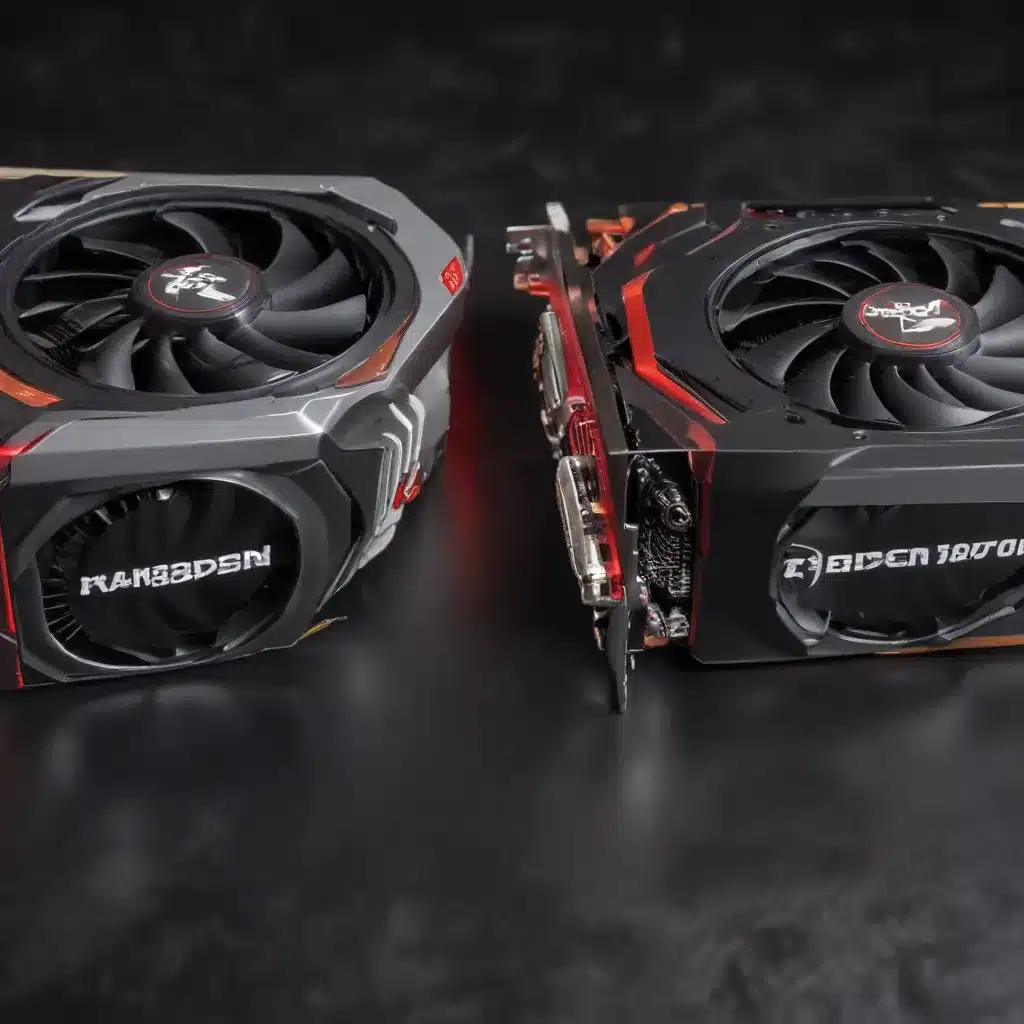
The Mid-Range Powerhouses Compared
In the ever-evolving world of PC gaming, the battle for the ultimate graphics card rages on. Two mid-range contenders have emerged, each promising to deliver an exceptional 1440p gaming experience – the AMD Radeon RX 7800 XT and the NVIDIA GeForce RTX 4070. As seasoned IT professionals, we’re here to provide an in-depth analysis, comparing the performance, features, and value proposition of these two graphics card heavyweights.
Radeon RX 7800 XT: AMD’s Sweet Spot
The Radeon RX 7800 XT, part of AMD’s latest RDNA 3 architecture, has been making waves in the mid-range GPU market. Priced at $499, this card boasts an impressive 16GB of VRAM, providing ample memory for high-resolution gaming and content creation tasks.
One of the standout features of the RX 7800 XT is its exceptional value proposition. Compared to the more expensive RTX 4070 from NVIDIA, the AMD offering provides a compelling price-to-performance ratio. “For the money, you compete with an RTX 4070 Super that would demand a lot more from your pockets,” notes a review on GamesRadar+.
In terms of raw performance, the RX 7800 XT holds its own, delivering excellent 1440p and even 4K gaming experiences. “Even if it’s billed as a 1440p driver, I take it to 4K in every game I play, and the 60+ frame rates it pulls out make it an absolute console killer,” the review continues.
AMD’s proprietary technologies, such as FidelityFX Super Resolution (FSR) and Fluid Motion Frames (FMF), further enhance the RX 7800 XT’s capabilities. These upscaling and frame generation tools provide a significant boost in performance, often delivering 20-30 FPS increases in demanding games.
GeForce RTX 4070: NVIDIA’s Efficiency Powerhouse
On the other side of the spectrum, the NVIDIA GeForce RTX 4070 offers a different approach to mid-range gaming. While it may not match the RX 7800 XT’s VRAM capacity, the RTX 4070 boasts impressive efficiency and performance.
According to technical.city’s analysis, the RTX 4070 SUPER (a hypothetical variant) outperforms the RX 7800 XT by a notable 24% in their aggregate benchmark results. “RTX 4070 SUPER has a 24.4% higher aggregate performance score, an age advantage of 4 months, and 19.5% lower power consumption,” the review states.
NVIDIA’s DLSS (Deep Learning Super Sampling) technology, which leverages the RTX 4070’s dedicated AI cores, often provides a more substantial performance boost compared to AMD’s FSR. This, combined with the card’s efficiency, makes it a compelling choice for those seeking a balanced combination of power and power consumption.
The 1440p Gaming Showdown
When it comes to 1440p gaming, both the RX 7800 XT and the RTX 4070 deliver impressive results. In popular titles like Hitman 3, the RX 7800 XT managed to achieve 116 FPS, while the RTX 4070 SUPER reached 104 FPS. However, in more demanding games like Returnal, the tables turned, with the RTX 4070 SUPER achieving 104 FPS compared to the RX 7800 XT’s 60 FPS.
It’s worth noting that the benchmarks were not conducted in a fully controlled environment, as the systems used for testing varied. Nevertheless, the numbers provide a good indication of the relative performance between the two cards.
| Game | RX 7800 XT | RTX 4070 SUPER |
|---|---|---|
| Hitman 3 | 116 FPS | 104 FPS |
| Returnal | 60 FPS | 104 FPS |
When it comes to ray tracing performance, NVIDIA’s RTX technology maintains a clear advantage, as the review on technical.city points out: “For the money, you compete with an RTX 4070 Super that would demand a lot more from your pockets, and with Team Red’s homegrown version of DLSS, you won’t feel like you’re missing out on much.”
Beyond Gaming: Content Creation and Versatility
While gaming performance is a significant factor, both the RX 7800 XT and RTX 4070 offer impressive capabilities in content creation tasks. The RX 7800 XT’s 16GB of VRAM provides ample headroom for working with high-resolution video and 3D modeling, while the RTX 4070’s dedicated AI cores can accelerate tasks in applications like Adobe Premiere Pro.
In the review on GamesRadar+, the author noted: “I’ve detected next to no performance dips when scrubbing through 4K video, and although the fans in my PC kick up a storm in those heavier Adobe Premiere Pro sessions, the GPU never seems to mind and keeps a solid ambient temperature in the 60s (centigrade).”
Beyond their core gaming and content creation prowess, both graphics cards offer a range of features and software support that enhance the user experience. From AMD’s Adrenalin software to NVIDIA’s GeForce Experience, these tools provide easy-to-use interfaces for driver updates, game optimization, and even gameplay recording.
The Verdict: A Matter of Preference and Budget
When it comes to choosing between the Radeon RX 7800 XT and the GeForce RTX 4070, the decision ultimately comes down to personal preference and budget considerations. Both cards offer exceptional value and performance in the 1440p gaming space, but with their own unique strengths and trade-offs.
If you prioritize raw performance and efficiency, the RTX 4070 may be the better choice, especially if you’re a fan of NVIDIA’s ray tracing and DLSS technologies. However, if you value a more balanced approach, with ample VRAM and AMD’s upscaling solutions, the RX 7800 XT could be the more appealing option.
Ultimately, whichever card you choose, you can be confident that you’re getting a mid-range powerhouse capable of delivering an exceptional 1440p gaming experience. As always, we recommend researching and testing both options to determine which one best fits your needs and budget.
For more expert insights and practical tips on the latest technology, be sure to visit IT Fix – your go-to destination for all things IT and computer-related.












